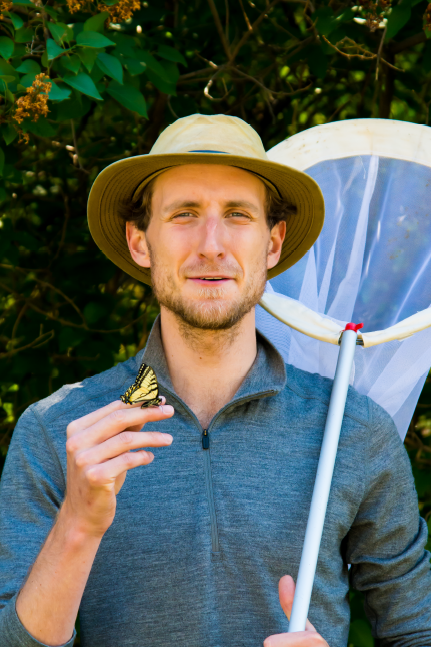La Kretz postdoctoral researcher Dr. Zachary MacDonald is using a combination of whole-genome sequence data and forward-in-time landscape and environmental modelling to predict how changes to habitat suitability, habitat connectivity, and climatic conditions are affecting threatened and alpine butterflies throughout California.
In collaboration with the National Parks Service, the US Fish and Wildlife Service (USFWS), and the California Conservation Genomics Project, Zac is completing a series of studies that address landscape and conservation genomics of threatened and alpine California butterflies. This research couples whole-genome sequencing with forward-in-time landscape and environmental modelling to identify present and future threats to these unique species of conservation concern.
Zac’s La Kretz Postdoc work is divided into three projects. Two of these projects address wide-ranging butterfly species in California: the Mormon Metalmark (Apodemia mormo) and Edith’s Checkerspot (Euphydryas editha). Each of these species exhibit substantial ecological variation across their California range and include federally endangered subspecies. Comparing population structure and adaptive genomic variation within and among populations will allow us to better understand factors that are contributing to population declines and extinction risks. This information may also be used to inform future translocation and reintroduction efforts, as well as ongoing USFWS captive breeding programmes. Zac’s third project is addressing landscape genomics of three high-elevation butterflies that are endemic to the Sierra Nevada: the Sierra Nevada Parnassian (Parnassius behrii), Sierra Sulfur (Colias behrii), and Ivallda Arctic (Oeneis chryxus ivallda). Theory predicts that continued habitat loss, habitat fragmentation, and climate change pose the greatest threat to the persistence of habitat specialists, particularly in mountainous regions. Whole-genome sequence data will be used to resolve fine-scale population structure, identify signatures of local adaptation, and assess the genetic health of isolated populations for each of these butterflies. Integrating these data with forward-in-time landscape and environmental modelling will allow us to identify present and future threats to the long-term persistence of these species, and evaluate whether they should be considered for federal listing and legal protection.




